Attendance Monitoring System Thesis
This is a full Attendance Monitoring System Thesis document from chapter 1 to chapter 5. It includes the Data Flow diagram, activity diagram, class diagram, ER Diagram, and the likes.
This article also includes complete source code using different language such as VB.Net, PHP and Django. Just look for the link below.
Attendance Monitoring System Thesis Chapter I
Time needed: 5 minutes
Attendance Monitoring System Thesis
- Attendance Monitoring System Thesis Chapter I
- INTRODUCTION
- Project Context
- Purpose and Description of the Study
- Objective
- Specific Objectives
- Scope and Limitations
- Definition of terms
- Attendance Monitoring System Thesis Chapter II
- Background of the Study
- Attendance Monitoring System Thesis Chapter III
- Methodology
- Architectural Diagram
- System Testing and Implementation
- Attendance Monitoring System Thesis Chapter IV
- The Existing System
- General Objectives
- Specific Objectives
- Scope of the Existing System
- Concept of Operation
- Attendance Monitoring System Thesis Chapter V
- The Proposed Solution
- Title and a brief description of the proposed solution
- Scope of the solution
- Concept of Operation
- Use Case Description
- Data Flow Diagram
- Data Dictionary
- Class Diagram
- Entity Relationship Diagram
- Advantages
- Disadvantages
- Technical Feasibility
- Social and Operational Feasibility
- Economic Feasibility
INTRODUCTION
Project Context
In our life today, computer is one of many inventions that greatly affect our way of living. In fact, it is noted as an essential tool in many areas including business, government, industry, sciences, education, school, home, and in almost any company and establishment that existed.
It can perform process data rapidly, accurately and reliable and by using these machines, spending a lot of time and effort in doing a certain task is minimized.
Computer nowadays has become the most needs of data and information processing. Computers have been very effective in many fields of work and study.
It certainly helps man to make his task much easier and with great precision. In schools and universities, computers are used to maintain the basic flow of data and information and checking the credit status of the students.
The computer is very useful in performing a great task in data and information processing, securing files, data, and information of the schools and people belong to it.
Computer programmers now a day try to build and develop high-quality systems that are very useful.
A computerized management system maintains the standard flow of data and information with highly secured and make data processing faster and easier.
These computerized systems help one person, company, organization or any type of management agency throughout the world to enhance and develop its general profile.
School attendance is a baseline factor in determining student success. (Great Schools Staff, 2016) The attendance is important because students are more likely to succeed in academics when they attend school consistently.
It’s difficult for the teacher and the class to build their expertise and growth if a large number of students are often absent.
In addition to falling behind in academics, students who are not in school on a regular basis are more likely to get into difficulty with the law and cause problems in their communities.
Purpose and Description of the Study
The purpose of this study is to identify the problems regarding the attendance monitoring of the RTTNHS Su-ay Ext and to implement what is needed by the school.
This study is to enhance students’ and teachers’ attendance performance and school security.
This study will develop a system to help the staff and make their attendance monitoring easy and their work with less effort.
With the system, provides a user-friendly environment and effective performance system, this will provide an easier and faster access to the data of every student and teacher in their Attendance Report.
Objective
The objective of this study is to give a solution to the problem in the existing system and to create a system that will help the school to make the attendance monitoring more accurate and to prove that the system developed is effective and helpful.
This study is generally to monitor the students and teachers; attendance and to evaluate performance, according to their attendance. Specifically, this will answer the following objectives;
Specific Objectives
- To allow teachers to monitor students who are not actively attending the school.
- To secure the attendance record of the students and teachers.
- To automate summary and remarks for attendance, the participation of every student
Scope and Limitations
The proposed Attendance Monitoring System is designed and developed for the school year 2016-2017 at Raymundo T. Tongson National High School Su-ay Extension.
There were 350 students from Grade 7 to Grade 10. It has 12 teaching staff, including the Teacher-In charge as the school head.
The design and platform of the project is a windows-based system that manages the user and client registration and provides the functionality of recording the individual records of the students and teachers. The system also provides a search capability and generates reports of the attendance.
Significance of the Study
Administrator.The school administrator can easily monitor both student’s and teacher’s daily attendance.
Parents. The parents can have a record of their student attendance for the purpose of information about the performance of their students.
Student. The students can easily enter and record their daily attendance in a timely manner and have the record when they needed.
Teachers. The teachers can easily enter and record their daily attendance in a timely manner and have the record when they needed.
Future Researchers. The future researchers can use our study as their guide of reference for their future researchers that are related to the database management system.
Definition of terms
For clarification and common understanding, the keywords used in the study were defined as follows:
Attendance. the act or state of going regularly to or being present at a place or event. Operationally, attendance refers to the number of students and teachers that are present (https://en.oxforddictionaries.com/definition/attendance, 2016).
Automation. the technique, method, or system of operating or controlling a process by highly automatic means, as by electronic devices, reducing human intervention to a minimum. (http://www.dictionary.com/browse/automation)
Computer Hardware. is the collection of physical components that constitute a computer system. (https://en.wikipedia.org/wiki/Computer_hardware, 2016)
Database . is a collection of information that is coordinated so that it can easily be accessed, managed, and updated. In one view, databases can be classified according to types of content (Kathuria, 2014).
Information System. is any organized system for the collection, organization, storage, and communication of information. Operationally, the information system refers to all the manual and computer-based application systems of the attendance monitoring system of RTTNHS Su-ay Extension. (https://en.wikipedia.org/wiki/Information_system, 2016)
MySQL. is an open-source relational database management system used in AMS for RTTNHS Su-ay Ext. (https://en.wikipedia.org/wiki/MySQL, 2016)
RTTNHS Su-ay Ext. Operationally define as Raymundo T. Tongson National High School Su-ay Extension.
AMS. operationally define as an Attendance Monitoring System that is used to monitor the attendance of an individual in a specific time and place.
Technology . is the collection of skills, techniques, methods, and processes used in the production of goods or services or in the fulfillment of objectives.
(https://raratheme.com/preview/the-minimal/the-steady-progress-of-technology, 2016)
Attendance Monitoring System Thesis Chapter II
Background of the Study
Raymundo T. Tongson National High School Suay Extension (formerly known as Vicente B. Figueroa National High School, in honor of the lot donor) is an annex school of Raymundo T. Tongson National High School, Talaban, Himamaylan City.
It is located in Purok RD, Barangay Su-ay, Himamaylan City, Negros Occidental with a lot area of more or less 3,000 square meters with a total enrolment of 350 students from Grade 7 to Grade 10.
The school has 12 teaching staff including the Teacher-In charge as the school head. It is a secondary school under the Department of Education Funded by the National Government.
The RTTNHS Su-ay Extension uses a manual transaction such as enrollment, attendance and library management.
This problem is very common to some schools especially in some areas that are far located in the city. Nowadays, the students’ population is rapidly increasing and this is a big problem for the schools to have a manual transaction and operation.
In order to give a solution to this problem, developing a computerized and automated transaction is a great solution for the schools.
This will benefit not only the school but also the students, teachers, and staff that will make the work more reliable and economical.
Fingerprint-based Attendance Monitoring System
Monitoring student attendance in the UK has become a verdure concern for Universities in recent months, due to a perceived lack of accuracy in reports submitted to the UK Borders Agency and political burden about broad immigration issues.
This project proposes a biometric-based solution to that interest which also adapt to legislative pressures on data governance and information security, but which can grant precise, decent data for the institution to use in future reports to UKBA All biometric techniques obviate to need to carry a token or card, or to remember several passwords, and reduce the risk of lost, forgotten or copied passwords, robbed tokens or over the shoulder intrusion.
This project shall focus on using fingerprint recognition, mainly due to the low-cost of devices for deployment and high user compliance.
Fingerprint recognition has commonly used for data access amongst a mobile community with increasingly portable devices, but it can also be employed for observation purposes, and this project characterized by how it could be used in this context to provide a fingerprint-based student attendance register. (C.O, Akinduyite, et al, 2013)
Daily Time Record System
Modern technology is a part of our daily life. It helps individuals and industries perform their tasks and daily routines, including their transactions. Modern technology gives an advantage in attaining our work.
This technology consists of devices and information systems that help us attain faster and reliable transactions. Each system lessens the load in personnel and paperwork of the management.
Today, organizations and other establishments rely on computers as the basis of their Database Management System.
Computer technology brought significant and various effects in all forms of human life such as helping people do their job faster, accurate and efficient.
But the fact is, in today’s modern age where the computer has become a way of life, it is obvious that a bulk of country institutions still do not accommodate the high technology.
Some of them prefer a manual because not all companies are computer literate in terms of programming software for the Time-In and Time-Out Records of their employees.
What they did not know is that being manually operated leads to inaccurate information.
The EASTERN Tanay Supermarket in Tanay, Rizal is a company wherein they do execute manual for keeping the daily time record of its employees.
When it comes to paper works, the establishment works in a manual operation like writing the employee’s information and the Time-In, Time-Out operation in a blue record book and then put it in file cabinets along with other forms such as planning record, events, leave assistance and more.
The punctuality Employees of EASTERN Supermarket recorded in a Daily Time Record that is being confirmed at the end of the day.
These are the few things that EASTERN confronted in their daily work.
In addition, depending on the manual procedure is not easy work for them.
It is because of having a lot of information, at times it points to incorrect input of employee records, unreliable and most especially, not secures confidential files. (Sharina Joy, Daily Time Record System, 2013)
Attendance Monitoring System
The computerized Students monitoring system that researchers developed is definitely for ID and Student’s verification only.
The main objective of our system is to check whether the student has an authorized ID or a falsified one and to verify whether the student is properly enrolled in the school.
The application of the RFID Matrix card system as a boarding student monitoring system was suggested to improve the management system and to monitor the activity group movement.
The unique RFID tags enable management to path the student’s movement in and out of the campus.
A particular without RFID card will generate the alarm and this will notify school administration about the availability of using an online monitoring system.
This system used the main component of the RFID system, database management system, and wireless networking.
RFID tag passes through the RFID reader in a read range zone, the system recorded data from the RFID tag to the database. Data sent online to the management for the supervision of the students.
At some point, we noticed that the registration must be covered as well. The main reason why is that there are some records to be considered with regards to the student’s important records in the registration files like the situation of a student in their school.
All in all, we can say that this system is more efficient and less time consuming for the school to identify whether the student is officially enrolled and has an authorized school ID. (Joyce Erika Salud, Attendance Monitoring, 2013)
Barcode-Attendance-Monitoring-System
Monitoring is one of the great responsibilities of a teacher. This includes teaching lessons to his/her students, writing lesson plans, and recording the achievement of the students.
Teachers have a lot of things to do in their daily routine, due to this daily task, they consume much time in doing paper works and preparing some devices as they are required to perform because they operate these tasks manually.
The researchers will build an automated attendance monitoring system for students using a barcode reader. Using the barcode reader, the teacher will have a connection to the profile of each student, which will be identified by reading his or her identification card.
At the same time, this system will send a message to the parents to notify them that their child is within the school-bound.
Since the students will just put their ID’s direct to the barcode reader, the teacher will have no more rush in monitoring the attendance of his/her students.
Furthermore, the school can assure the security of its students because it will recognize the attendance of each student. The parents are also guaranteed the presence of their children in school.
There is a need to develop a new system because of the grievance of most of the teachers about their daily tasks.
The new system will provide a simple process for the teachers in monitoring the students and in alerting the parents through SMS.
Therefore, the number of tasks to be done by teachers will be lessened. (Alvin Johnson, 2015)
Data Security
A computer security risk is any event or action that could cause loss of or damage to computer hardware, software, data, information, or processing capability. Some breaches to computer security are accidental, others are planned imposition.
Some infiltrators do no damage; they merely access data, information or programs on the computer before logging off. Other infiltrators indicate some evidence of their presence either by leaving a message or by deliberately altering or damaging data.
Computer systems are vulnerable to many threats which can expose various types of damage resulting in significant losses.
Damage can range from minor errors that sap database integrity to fires that destroy entire computer centers.
Losses can stem from the actions of supposedly trusted employees deceive the system to outside hackers roaming freely through the Internet.
The exact amount of computer-related losses is impenetrable; many losses are never discovered and others are covered up to avoid adverse publicity. (Rachelle Lucaña, 2012).
Before you Continue reading the Attendance Monitoring Thesis Chapter 3 Watch the video of a sample attendance Monitoring system thesis project.
Attendance Monitoring System Thesis Chapter III
Methodology
This chapter discussed the methods used in the collection and analyses of data. The methods focus on the experiences of people involved and attempt to understand the reasons behind certain behavior descriptions.
The evaluation was carried out using data collection techniques and interviews. Generally, we used Spiral Method for the whole study.
Spiral Development Method
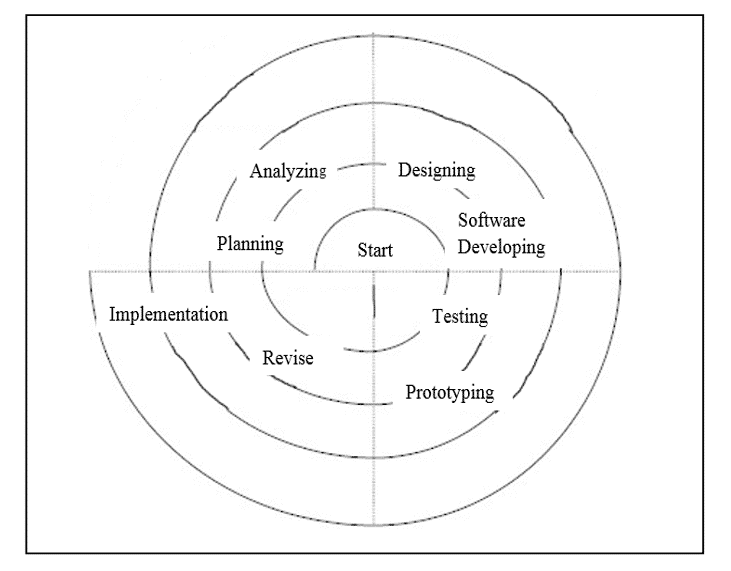
Figure 1: Spiral Development Method shows how exactly the group executes the study for RTTNHS Su-ay Ext. Attendance Monitoring System. Obviously, the planning covers all the process cycles in the study.
This includes organizing the team members, how to collect data and analyze the problem and created a design for the database and user interface of the program according to the data analysis.
Testing and implementation of the system are discussed in this section.
Planning
This part is the initiation part where the research study was started. In planning, we start searching where we conduct our study and we decide to conduct our study in RTTNHS Su-Ay Ext.
We plan on how to collect data and how to organize our time in conducting a research interview. Organized the members of their individual roles and obligations in conducting the study.
In planning, it includes analyzing, designing, software development, testing, and implementation.
Analyzing
In this stage, researchers conducted an interview in RTTNHS Su-ay ext. This is where researchers collected the needed data for the research.
The part of the interview was to know what was being used in their current system and researchers noticed that the transactions were manually operated in the school.
After gathering the data and analyzed the problem according to their existing system, researchers analyzed how to give a concrete solution to those problems and based on the problem.
Designing
Designing is based on users and client roles. This stage is creating a design for the system. It includes a student registration form, teacher’s registration form, reports, attendance transaction, and student and teacher’s information management. The system is designed as a user-friendly system.
Software Development
- Coding
In the development of the system, we made use of Microsoft Visual Basic Studio 2008 for encoding the source code of the system, in order to be the accurate and fast acquisition of data and information.
- Testing
After finishing the main parts of the transaction of the system, the proponents gave a test sample to the client and there is a lot of learning they encountered, it made them know the minor and major mistakes in the system and it gave the researchers more understanding on how to develop it.
Implementation
Documents were compiled for final output to be submitted to the client. This includes documentation and software. Giving some user orientation or tutorials on how to use the system is held at this stage.
Constraints
The lists below are some constraints that may encounter during the operation.
- Natural Disaster – can naturally interrupt any operation in the school and such as floods, earthquake, and typhoons.
- Hardware – in some cases like unexpected brownouts, using computerized transaction is unavailable and sometimes the hardware components of the computer like power supply, motherboard, and hard drive could be affected by the improper shutdown of the computer due to unexpected brownouts that will cause computer malfunctions. Improper use of the computer may also cause hardware problems.
- Software – computer virus is the most common problem in software functionalities.
- This is done by downloading from the internet like images, music, videos that are not necessary to the system. File sharing from infected USB pen drives could spread the virus to the computer system.
Architectural Diagram
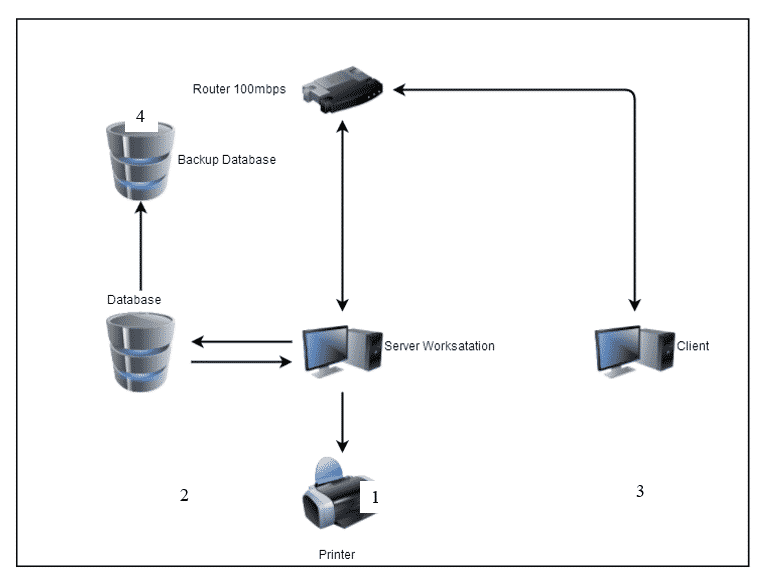
Figure 2: Architectural Diagram shows the network interface of the system that will be used for RTTNHS Su-ay Ext. (STAMS).
The process starts in registering the students and teachers from the server workstation and automatically saved the data into the database.
After registration, the staff can record the attendance of students and teachers from the client computer.
The student in the teacher’s information will retrieve from the database and process attendance recording.
The attendance record is also automatically saved in the database and backup database for total data security.
System Testing and Implementation
By making this project successful, the proponents tested the system to be used by the representatives from RTTHNS as users and clients of this project.
This is to evaluate the functions of the system that produce reliable information that makes the system more efficient and effective.
System implementation is very important to see the effects and importance and usefulness of the proposed system from the existing system.
The RTTNHS STAMS was tested in the Raymundo T. Tongson NHS Su-ay ext. faculty office with two (2) computer units.
Computer 1 serves as a server computer that will be used by the Administrator.
Computer 2 serves as a client computer that will be used by the school staff.
System Features
The lists below are the feature that is included in the Attendance Monitoring System Thesis for RTTNHS Su-Ay Ext.
- Student Registration
- Teacher Registration
- Attendance Monitoring for student and teachers
- Easy retrieval of attendance record for both student and teachers
- Student and Teachers Information Management
- Daily and Monthly Attendance Report for Students and Teachers.
Recommended Hardware Specification
- Intel(R) Core(TM) i3-4170 CPU @ 3.70GHz, 3700 MHz, 2 Core(s), 4 Logical Processor(s)
- 8GB 1333MHz DDR3
- Dual 1GB LAN ports
- 400w Fixed UPS
- 1TB HDD
- Keyboard
- Optical Mouse
- LCD / LED Monitor.
Recommended Software Specification
- Windows 7 Ultimate 32bit
- Microsoft Visual Studio 2008
- Crystal Report for VS 2008
- PHP, MySQL, Apache
Recommended Network Specification
- N300 Wireless ADSL2+ 4-Port Wi-Fi Router
- UTP Cable Cat5e
- RJ 45
Attendance Monitoring System Thesis Chapter IV
The Existing System
The existing system is a manual entry for the student’s and teachers’ information. Here, the attendance will be carried out in handwritten registers. It will be a tedious job to maintain the record for the user.
The system requires more human effort. The retrieval of the information is not easy because records are maintained in handwritten registers.
This application requires correct feed in the respective input field.
Supposed there were wrong inputs entered, the application resists requiring the user to input correct data.
General Objectives
This study aims to monitor the students’ and teachers’ attendance and to evaluate their performance according to their attendance.
Specific Objectives
- To record daily time record of the teachers
- To check the daily attendance of the students
- To maintain the security of the students and teachers within the school
Scope of the Existing System
The system covers all the students and teachers of RTTNHS Su-ay Ext. The system is applicable for teachers because it can be used to compute for their payroll.
It is limited only to students who have been monitored from time to time and who are officially enrolled and to the teachers who are employed in RTTNHS.
Concept of Operation
Having a manual operation in a school or in a company brings a lot of work and sometimes this method causes errors in inputting data like basic student information that results to another set of work.
In other words, the manual operation takes also a lot of time and effort. In manual attendance monitoring, the teachers are using timesheet in their attendance, attendance log and attendance sheets.
These are all paper works and these can easily get damaged and worst is that these can be tampered or modified. Security is also involved in this system.
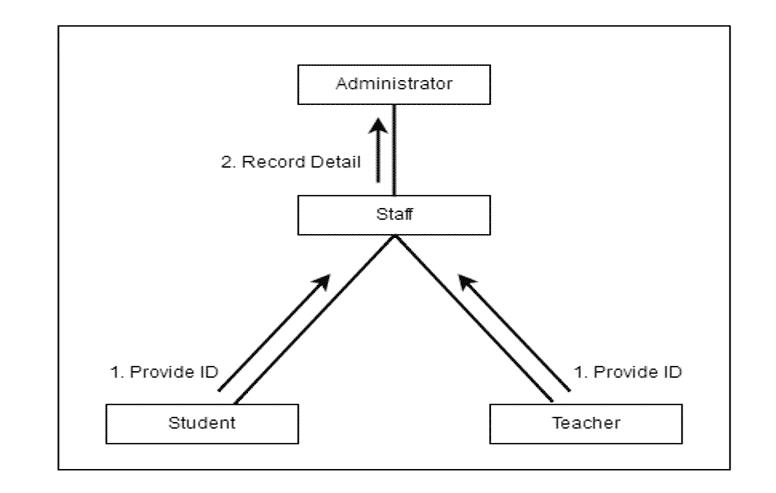
Figure 3 shows the existing systems activity diagram. This figure shows two processes in monitoring the attendance.
Process one is from students’ and teachers’ entities wherein their identification cards are required for them to enter the school. Process two records the details of attendance from the staff or employee to the administrators.
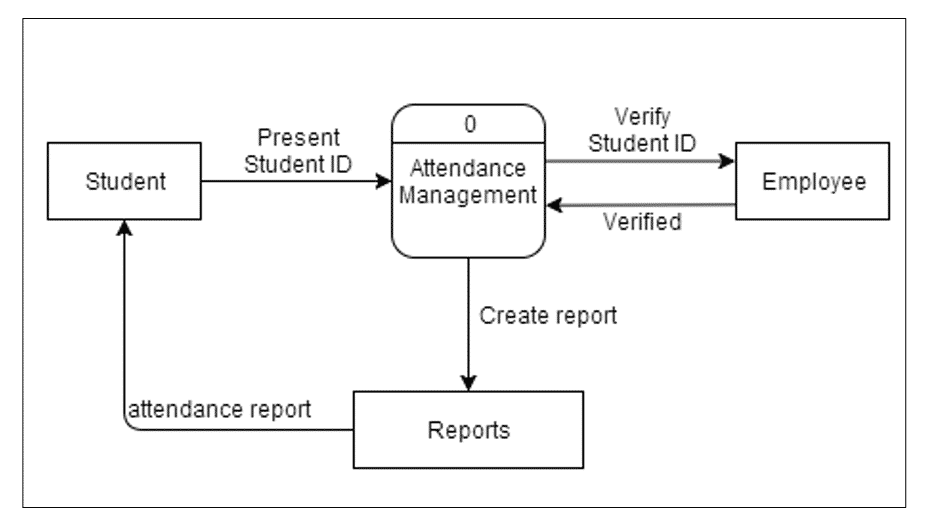
Figure 4 shows how the manual operation works in the system and who are involved in the operation.
In order for a student to enter the school, he or she must have the school ID. Then the employee will verify the ID and so, the student can now enter the school. This type of system is not much observed in some schools.
Attendance Monitoring System Thesis Chapter V
The Proposed Solution
The AMS for RTTNHS Su-ay Ext. is developed for the attendance monitoring of Raymundo T. Tongson NHS Su-ay Ext. The system is a window – based system that has the function to record the attendance of the students and teachers.
The proposed system covers the problem of using the manual system such as an unsecured record of attendance, lots of paper works, and inaccuracy of the data inputs.
This proposed system will benefit the school for its development and improvement by using new technology and improved system for the day-to-day process of attendance.
Title and a brief description of the proposed solution
The proposed system is entitled Attendance Monitoring System thesis for Raymundo T. Tongson NHS Su-ay Ext.
The system is developed to provide automation for the daily attendance of the students and teachers.
The purpose of this system is to help the RTTNHS Su-ay Ext. to improve the attendance monitoring system for students and teachers.
With the system created with a user-friendly environment, the school staff would find their work easy and efficient.
The system will help the school administrators to make the process of providing daily, weekly and monthly attendance reports easy to generate.
The system will also help the school administrators to evaluate the attendance performance of the students and teachers with ease. This will help the school a lot for its development and performance in terms of attendance monitoring.
Scope of the solution
The proposed system was generally focused on the monitoring of the log in and logout of the students and teachers.
Students and teachers will only provide their identification code for their attendance after registering their information.
The system will automatically determine and reflected if a student did not attend his classes.
Concept of Operation
The implementation plan will be enhanced and updated as new actions are introduced and as implemented to the system.
The system tracks the performance of students regarding their attendance on a regular basis. The System Overview Attendance Monitoring System provides a foolproof solution for the existing problems of the business.
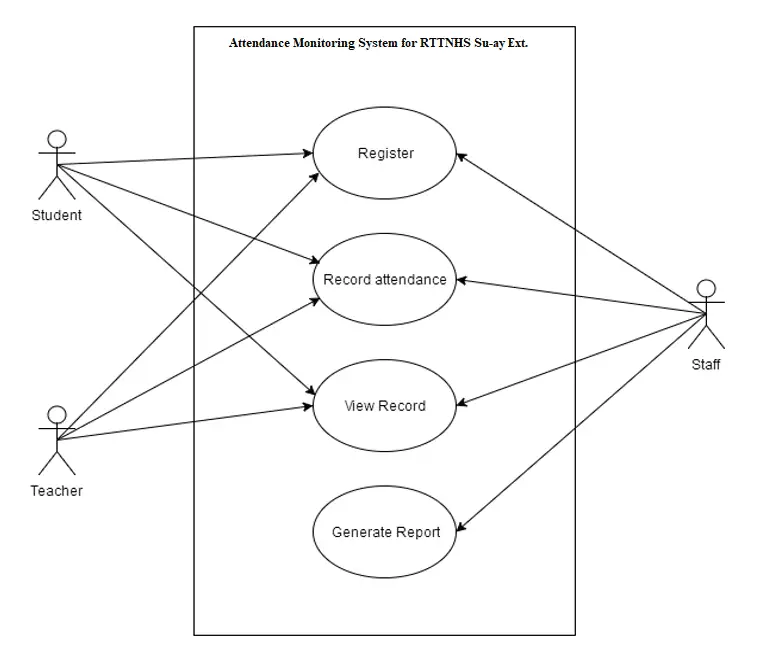
Figure 5 shows how the system works and interacts with the actors.
First, the staff will register the students and teachers after registration, the staff will record the attendance of the students and teachers using the provided identification number and save to the database.
The staff can view attendance and create a report for the teachers and students. Students and teachers must request the staff to view their attendance records.
Use Case Description
The tables below describe all the functions, conditions and alternative flow to be met of all the entities used in the use case diagram
Table 1: Register
| Use Case Name | Register |
| Primary Actors | Staff, Student, Teachers |
| Description | The staff will register the student’s and teacher’s information. |
| Stakeholder and Interests | Students and teachers – registering the basic information. Staff – Responsible for the inputting of the student and teacher’s information. |
| Pre-condition | The student must be officially enrolled in the school. Teachers must be employed in the school. |
| Post-condition | Student and teachers added as a new member |
| Main Success Scenario | Student and teachers will receive their ID Number. |
Table 2: Record
| Use Case Name | Record Attendance |
| Primary Actors | Staff, Student, Teachers |
| Description | The staff will record the registered students and teachers. |
| Stakeholder and Interests | Student and teachers – present ID number and have a daily attendance Staff – Record attendance using the ID number |
| Pre-condition | The students and teachers should have the identification card provided after registration. |
| Post-condition | If precondition is met, then the staff will enter the id number and record attendance. |
| Main Success Scenario | Students and teachers have their daily attendance. |
Table 3: View Record
| Use Case Name | View Record |
| Primary Actors | Staff, Student, Teachers |
| Description | The students and teachers can view their attendance detail. |
| Stakeholder and Interests | Students and teachers – want to view their attendance records. Staff – search for the attendance details of students or teachers. |
| Pre-condition | In order to view attendance records, they must present their identification cards to the staff will search for their attendance details. |
| Post-condition | If preconditions are met, then the staff will search for the attendance detail |
| Main Success Scenario | Students and teachers view their attendance detail. |
Table 4: Generate Report
| Use Case Name | Generate Report |
| Primary Actors | Staff |
| Description | The staff will create a daily and monthly report of attendance. |
| Stakeholder and Interests | Staff – must generate daily and monthly report |
| Pre-condition | The staff must log in as an administrator and access the report form. |
| Post-condition | If preconditions met, then the staff create the report specific for students and teachers. |
| Main Success Scenario | The report will be provided to the school administrator for the evaluation of the student and teachers. |
Attendance Monitoring System Thesis for RTTNHS Su-ay Ext. Data Flow Diagram
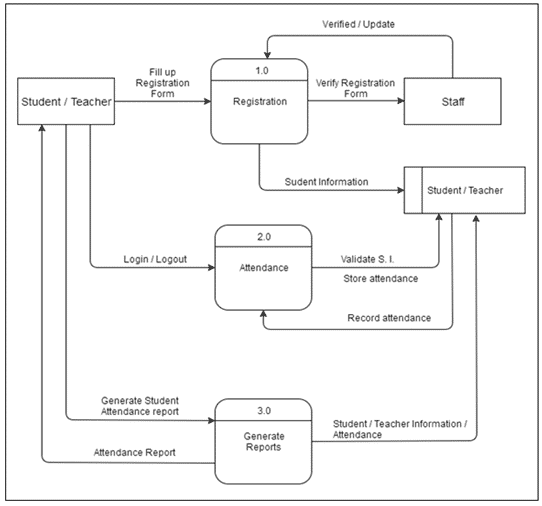
Figure 6 shows that the staff will register the student or teacher and be verified by the staff. The registration is only a one-time process for each student and teacher.
After the registration, it will continue to log in and record for daily attendance. Reports can be generated daily or monthly according to the student’s or teacher’s requests.
Data Dictionary
The tables below show the list of conceptual database. It shows the attributes, data types, and descriptions to be included in the database. This ensures that the information needed was captured by different databases.
Table 5: tblstudent
| Field Name | Description | Type | Length |
| STD_ID (pk) | Student ID number | int | 11 |
| STD_FNAME | First name | varchar | 30 |
| STD_LNAME | Last name | varchar | 30 |
| STD_ADDRESS | Address | varchar | 50 |
| STD_YEAR | Year Level | varchar | 10 |
| STD_SECTION | Section | varchar | 10 |
| STD_BIRTHDAY | Date of Birth | varchar | 30 |
| STD_AGE | Age | int | 3 |
| STD_GENDER | Gender | varchar | 10 |
| STD_CONTACT | Student Contact Number | varchar | 30 |
Table 6: tblstaff
| Field Name | Description | Type | Length |
| STF_ID (pk) | Staff ID number | Int | 11 |
| STF_FNAME | First Name | varchar | 30 |
| STF_LNAME | Last Name | Varchar | 30 |
| STD_ADDRESS | Address | Varchar | 50 |
| STF_CONTACT | Contact Number | varchar | 20 |
| STF_TYPE | User Type | varchar | 30 |
| STF_USERNAME | User Username | varchar | 30 |
| STF_PASSWORD | User password | varchar | 30 |
Table 7: tblteacher
| Field Name | Description | Type | Length |
| TEA_ID (pk) | Teacher ID Number | varchar | 15 |
| TEA_FNAME | First Name | varchar | 30 |
| TEA_LNAME | Last name | varchar | 30 |
| TEA_ADDRESS | Address | varchar | 50 |
| TEA_AGE | Age | int | 3 |
| TEA_BDAY | Date of Birth | varchar | 30 |
| TEA_GENDER | Gender | varchar | 10 |
| TEA_CONTACT | Contact Number | varchar | 20 |
| TEA_ADVISORY | Advisory | varchar | 20 |
Table 8: std_attendance
| Field Name | Description | Type | Length |
| SATT_ID (pk) | Student Attendance ID | int | 11 |
| STD_ID (fk) | Student ID number | int | 11 |
| SATT_DATE | Attendance date | varchar | 30 |
| SATT_AM_IN | Am Login | varchar | 10 |
| SATT_AM_OUT | Am Logout | varchar | 10 |
| SATT_PM_IN | Pm Login | varchar | 10 |
| SATT_PM_OUT | Pm Logout | varchar | 10 |
Table 9: tea_attendance
| Field Name | Description | Type | Length |
| TATT_ID (pk) | Teacher Attendance ID | int | 11 |
| TEA_ID (fk) | Teacher ID number | varchar | 15 |
| TATT_DATE | Attendance date | varchar | 30 |
| TATT _AM_IN | Am Login | varchar | 10 |
| TATT_AM_OUT | Am Logout | varchar | 10 |
| TATT _PM_IN | Pm Login | varchar | 10 |
| TATT _PM_OUT | Pm Logout | varchar | 10 |
Class Diagram

Figure 7 shows the database tables used for RTTNHS Su-ay ext. attendance monitoring system. It indicates the functions and relation to each table. The student, teachers, and staff table show that data can be added, updated and can be deleted while attendance table for students and teachers can only be added.
Entity Relationship Diagram
Attendance Monitoring System thesis for RTTNHS
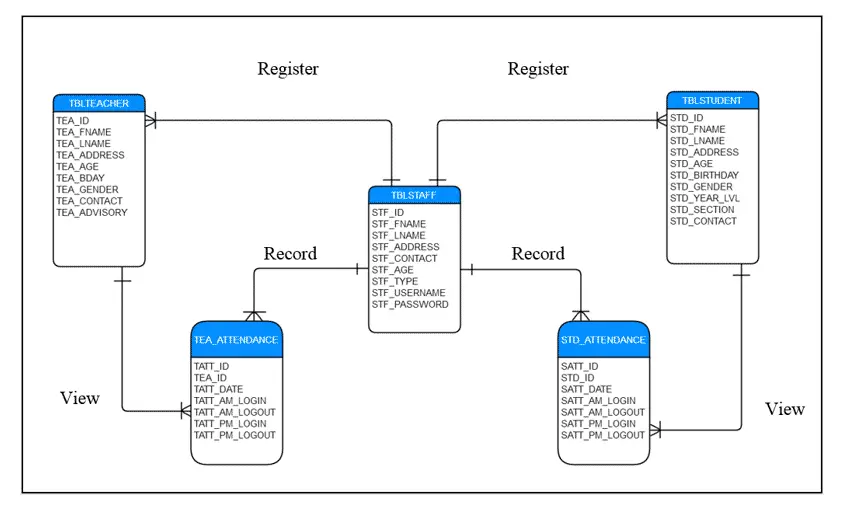
Figure 8 shows the relationship of tables in the database, an ERD is shown to trace the connection of each table.
The models of the data were used independently of all physical consideration is constructed.
The model is based on the requirements specification of the system. The design also considers the logical and physical database design phase meaning the design is based on the target data and base relations, indexes, integrity constraint, security are defined using SQL Language.
The database management system (DBMS) used was MySQL and the design user interface and the application program that use and process the database are defined and designed.
Advantages
- Reduce paperwork and save time and money with mobile and cloud-based attendance management system
- Eliminate duplicate data entry and errors in time and attendance entries
- Improve visibility to track and manage student’s attendance & absenteeism across multiple campuses
- Track the attendance of teachers and students.
- Keep the parents informed about the student’s performance
- Auto-generate various types of reports of student attendance
- Increased security and confidentiality with role-based permissions to users
Disadvantages
- Automatic calculation of leave and reward points accrued
- Automatic teachers and student evaluations about attendance performance.
- Scheduling of events in the school.
Technical Feasibility
During the research development of AMS RTTNHS Su-ay ext., we conclude that the system is technically feasible because all the technical aspects of the system are already available presented to the organization throughout the research.
Social and Operational Feasibility
The AMS RTTNHS Su-ay ext. is social and operational feasible because the system is designed as a user-friendly system and accordance to the client’s needs for the effectiveness of the operation and process of delivering the desired output needed by the client.
Economic Feasibility
The Attendance Monitoring System Thesis is being developed is economic with respect to the school’s point of view. It costs effective in the sense that it has eliminated the paperwork completely.
The system is also time effective because the calculations are automated which are made at the end of the month or as per the user requirement.
The result obtained contains minimum errors and is highly accurate as the data is required.
Maybe you may like these articles:
Enrollment System Thesis Chapter 1
Sales and Inventory System Documentation Chapter 1
Here’s the Sample Source Code for this Attendance Monitoring System Thesis Document
- School Attendance Monitoring System With Source Code | Desktop Version
- Attendance Management System In PHP With Source Code | Web Version
- Student Management System Project In Django With Source Code
If you have any questions or suggestions about Attendance Monitoring System Thesis, please feel free to contact me or simply leave a comment below.

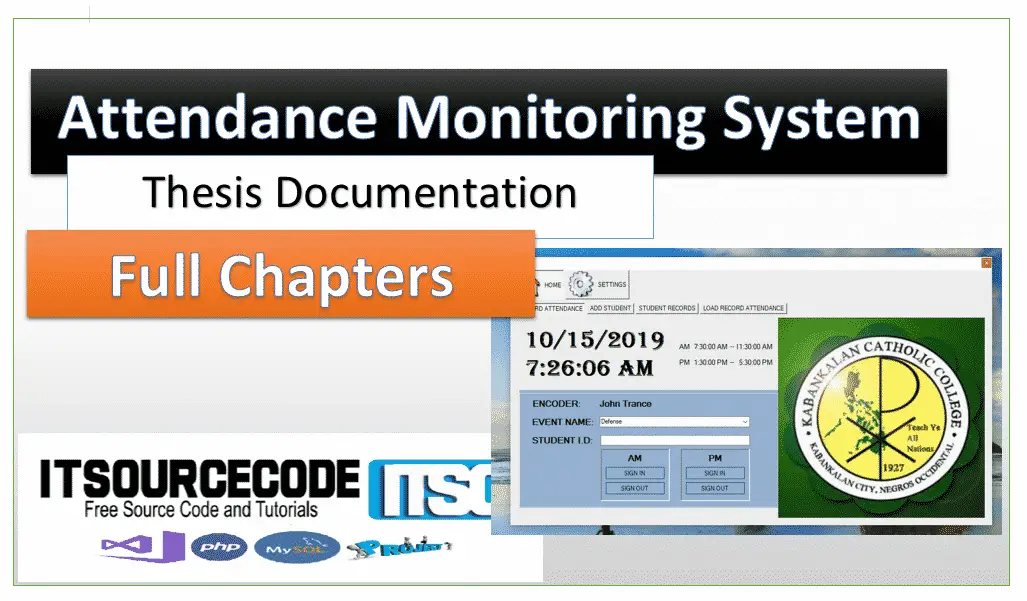
I have a question sir.
1.How to maintain the security of the students and teachers within the school.
2.How to allow teachers to monitor students who are not actively attending the school.
3.How to secure the attendance record of the students and teachers.
Hello I have question!
When i read all the document i don’t see the interaction of the parents by you invoque that the parents can have some notification from their student to confirm their presence!
Something else can you explain me more for the barcode systeme i did’nt get you wery well in this part.
what other unique feature to add in student monitoring system?